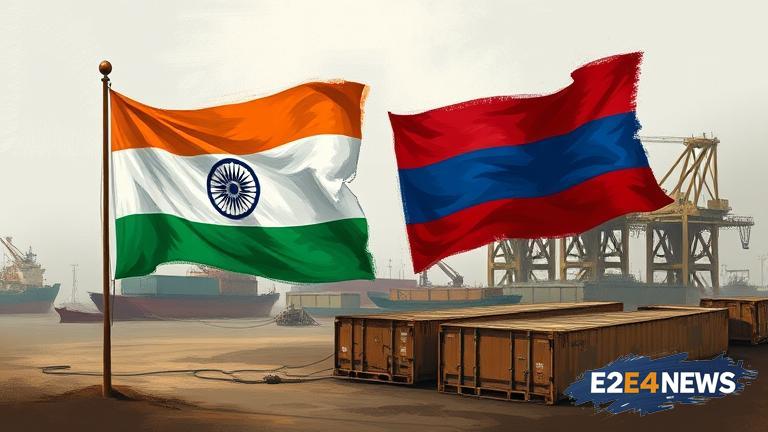The United States has announced its decision to impose higher tariff rates on certain products from India and Russia, a move that is likely to have significant implications for the two countries’ oil trade deal. The US Trade Representative’s office stated that the tariffs would be imposed due to the countries’ failure to provide adequate protection for American intellectual property rights. The decision has sparked concerns among Indian and Russian businesses, which fear that the tariffs could lead to increased costs and reduced demand for their products. The oil trade deal between India and Russia has been a major point of contention, with the US expressing concerns over the potential for the deal to undermine its sanctions on Russia. India has been seeking to increase its oil imports from Russia, which has been looking to expand its energy exports. The two countries have been negotiating a trade agreement that would allow for the exchange of oil and other goods. However, the US has been critical of the deal, citing concerns over Russia’s actions in Ukraine and its alleged meddling in the 2020 US presidential election. The imposition of higher tariff rates is likely to add to the tensions between the US and India, as well as between the US and Russia. Indian officials have expressed disappointment over the US decision, stating that it would harm the country’s economy and its ability to trade with other nations. Russian officials have also criticized the move, saying that it would have a negative impact on global trade. The US has been seeking to reduce its trade deficit with India and Russia, and the imposition of higher tariff rates is seen as a way to achieve this goal. However, the move is likely to have unintended consequences, including higher prices for American consumers and reduced economic growth. The oil trade deal between India and Russia is seen as a key component of their bilateral relations, and the US decision is likely to put a strain on these relations. The two countries have been working to increase their trade and investment ties, and the imposition of higher tariff rates could undermine these efforts. The US decision is also likely to have implications for other countries, including China, which has been seeking to increase its trade and investment ties with India and Russia. The imposition of higher tariff rates is seen as a protectionist move, and it could lead to retaliatory measures from other countries. The US has been accused of using tariffs as a tool to exert pressure on other countries, and the decision to impose higher tariff rates on India and Russia is seen as a continuation of this policy. The impact of the US decision will be closely watched, as it could have significant implications for global trade and the economy. The US has been seeking to promote its energy exports, and the imposition of higher tariff rates on Indian and Russian products could be seen as a way to gain a competitive advantage. However, the move is likely to be met with resistance from other countries, which could lead to a trade war. The US decision is also likely to have implications for the global economy, as it could lead to increased prices and reduced economic growth. The imposition of higher tariff rates is seen as a short-sighted move, as it could undermine the long-term interests of the US and its trading partners. The US should seek to promote free trade and reduce tariffs, rather than imposing higher tariff rates on other countries. The decision to impose higher tariff rates on India and Russia is a setback for global trade and the economy, and it could have significant implications for the future of international relations.
